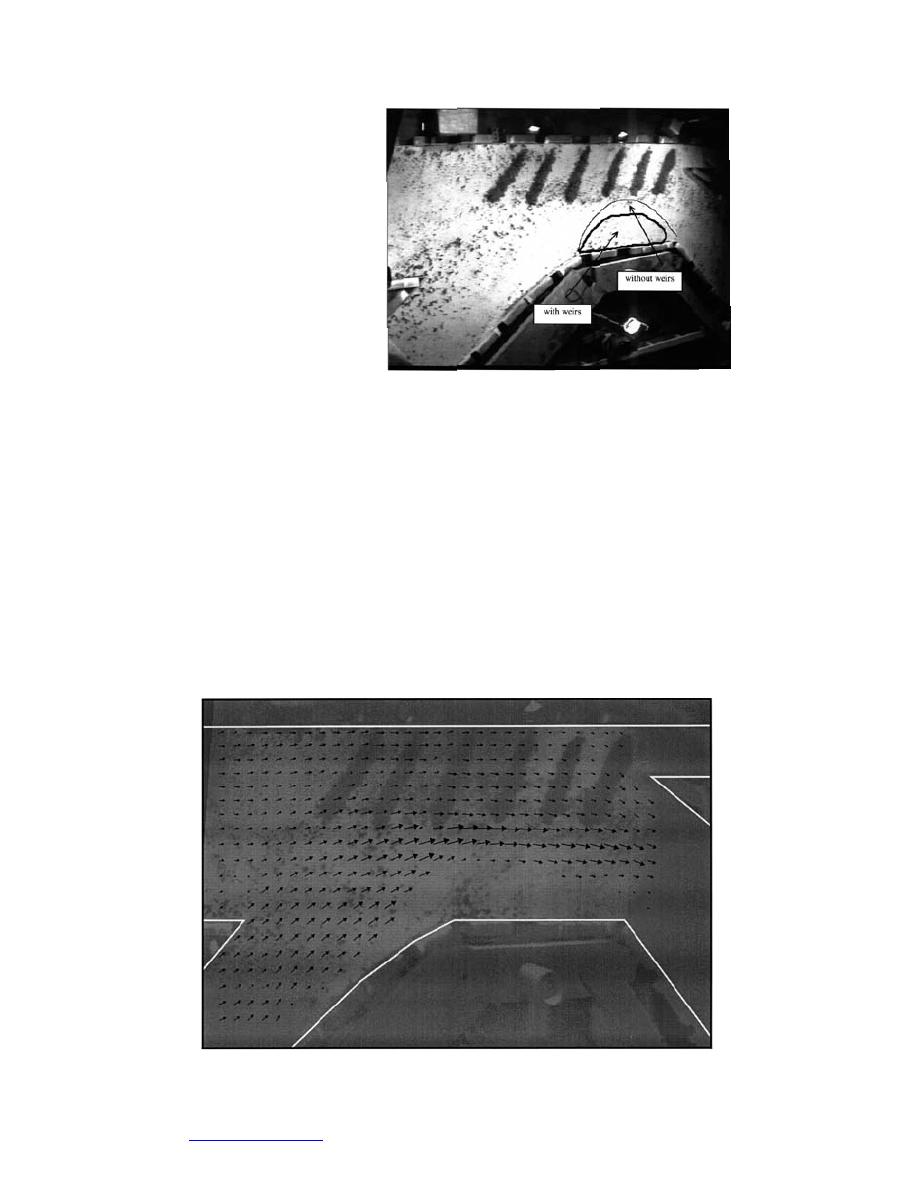
bar is exposed at low water
level. As can be observed
from Figures 35, 36, and 37,
and as confirmed by the
hydraulic model, surface
area constriction by the
exposed bar and border-ice
growth from the bar causes
drifting ice to congest and
accumulate in the contrac-
tion.
Confluence with bar
and bendway weirs
The six bendway weirs Figure 49. Open water flow through the confluence fitted
positioned in the conflu- with bendway weirs. Indicated are the extents of the flow
separation zone with and without the bendway weirs in
ence redistribute the flow
place (note that the bar has not been removed).
s u c h that the dividing
streamline between the confluent inflows shifts across towards the bar. Addition-
ally, flow velocities over the bendway weirs decrease. They increase along the
middle portion of the confluence and near the bar. The net effect is that the bend-
way weirs approximately halve the size of the flow separation region. This effect
is indicated in Figure 49. It also is evident in the vector field of ice drift velocities at
the water surface is shown in Figure 50.
The altered flow field in the confluence enhances ice movement through the
confluence, and thereby increases its capacity to convey ice. The development of
significant current through the bar area, together with the widening of the surface
area of flow prevented drifting ice from slowing and congesting in the confluence.
Further, the bendway weirs caused the flow of ice to move away from the outer
Figure 50. Vector plot of velocities for open water flow in Figure 49.
56
Go to contents page



 Previous Page
Previous Page
